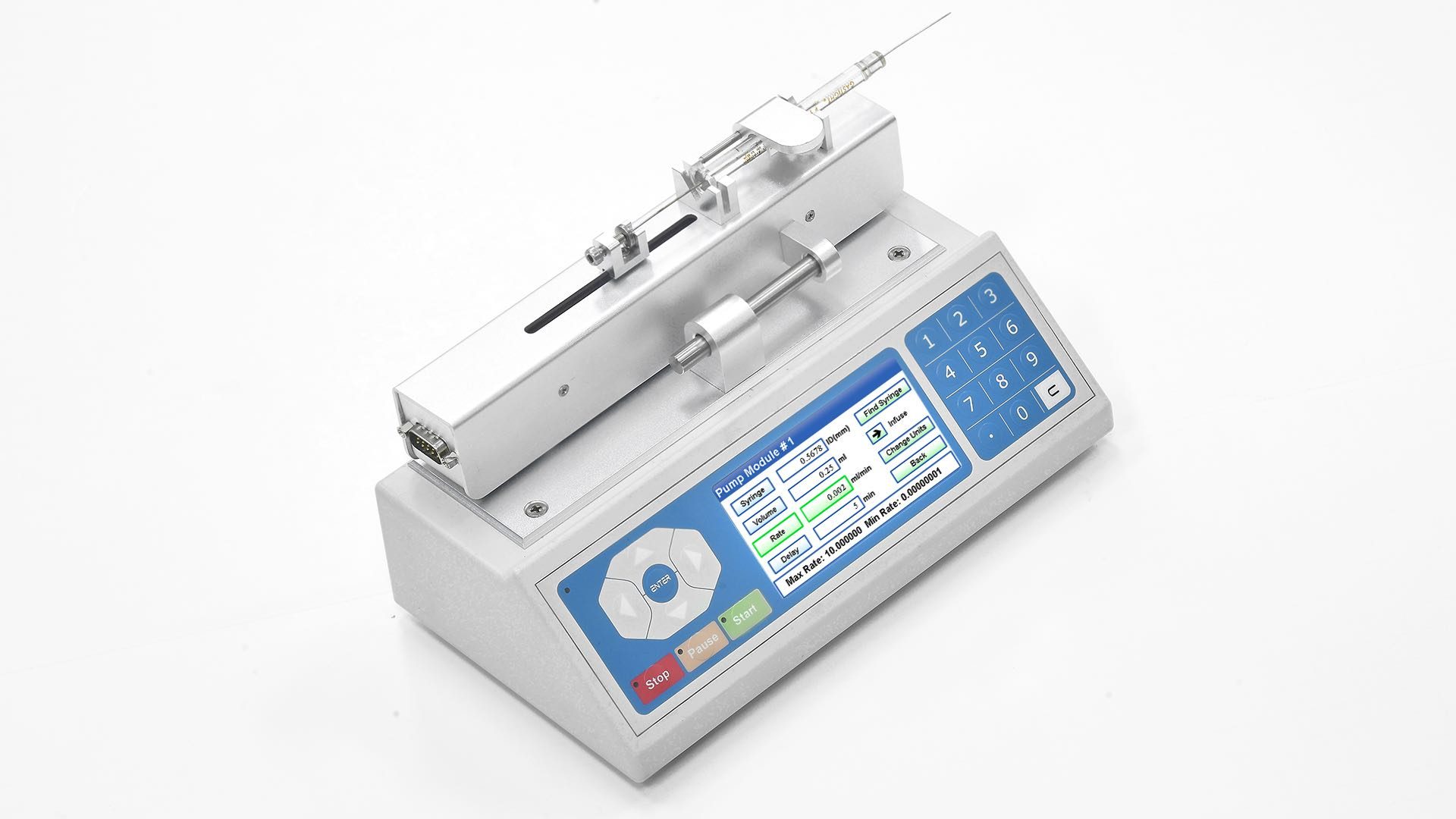
Infusion pumps introduce fluids into the human body. It carries nutrients and medications into the circulatory system of the patient. The infusion pump is usually used intravenously. Sometimes the fusions are done subcutaneous arterial and epidurally.
Nursing staff cannot administer the fluids needed by a patient as reliable or as inexpensive as the infusion pumps. Infusion Pumps can give the patient as little as 0.1 mL per hour by injections which are too small for a drip, injections each minute, repeated boluses that the patient may request or up to a maximum per hour of times that the patient may need. That is called patient-controlled analgesia. Fluids that have volumes that are varied by time of day is also done more reliably with an Infusion Pump.
The IV Pump produces a lot of high pressure that is controlled. It can inject amounts of fluid needed beneath the skin, or by epidurally which is in the central nervous system. Many women have had epidurals when giving childbirth.
There are different types of Infusion Pumps. The continuous infusion is small pulses of fluids between 500 nanoliter and 10 milliliters. The intermittent infusion timings can be programmed. They have a high infusion rate that alternates with low infusion rate that will keep the cannula open. These are programmable. Antibiotics and other drugs can irritate the blood vessels of the patients so the infusion is the best way to give the patient the needed meds. The programmed amount of antibiotics going into the patient must be at least 30 CCs, otherwise about half of the antibiotic will stay in the IV tubing.
On-demand patient-controlled infusion has a preprogrammed amount that the patient can use. This helps to avoid intoxication of any meds. The rate of the meds is controlled by a pressure pad or a button that the patient can trigger. Small doses of opioid analgesics can be delivered by the patient and the fusion is programmed to shut off before any harmful amounts can be administered.
Smart infusion pumps have set a new standard of safety for IV administration of medications. The commercial infusion systems are set up to perform a test of moderation. The system checks the programming to make sure it is set within the pre-established limits before infusion can begin.
The new system has been established with a library of drugs and dosing units such as units/hr, mcg/kg/min and the amount of dose to be administered. The drug dose can be calculated for both the bolus and continuous infusions. The libraries are set up by the hospital pharmacy, therapeutics committee and the area in which the patient is being treated. The system will automatically configure to meet the need of the Adult ICU, NICU area. The clinician will then choose the drug and the concentration from the predetermined list. There are safeguards built into the system that include not using the patient’s weight if the drug does not require the patient’s weight and alerts the user if the dose is too much. The smart pump will also log all alerts.

